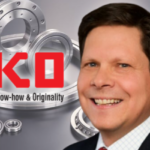If you’ve spent much time around kids, you know they often have to be reminded about the difference between an “outside voice” and an “inside voice.” What may work outside (yelling, singing loudly, etc.) doesn’t work once you’re inside, a much different environment.
Grownups generally understand the difference between outside and inside voices. But what about when it comes to distribution sales?
Too often, distributors apply their outside sales model to their inside sales team. As a result, their inside sales team struggles. You can’t copy and paste your outside sales model and expect your inside sales team to be successful. It’s a different environment with different challenges and requires a different approach.
You can create a proactive inside sales team and a highly profitable channel when you approach it in the right way and with the right technology. Distribution Strategy Group found a proactive inside sales rep can have a 30 to 50% lower cost of sales than a field rep, suggesting you can sell more at a fraction of the cost of an outside sales rep if you set up your inside sales model correctly.
Benj Cohen is one of the speakers in MDM’s star-studded SHIFT | The Future of Distribution content lineup, set for Sept. 18-20 in Denver. The event brings together distribution leaders to learn and network across topics of sales & marketing, digital transformation, data analytics and talent management. Find more info here.
An Inside Sales Success Story
I recently spoke to an inside sales rep at a $3B industrial distributor. Despite having no distribution industry experience, within seven months of starting, she outperformed reps who had been with the company for years and earned a big promotion.
You might think, “She must have great relationships with her customers.” But that’s not the case!
In fact, she hadn’t even spoken to some of her top-spending customers over the phone.
Her secret sauce? She pitched product recommendations and reorder reminders over email to reach customers who never picked up the phone. Armed with an AI-powered tool that gave her direction on who to talk to and what products to recommend, she pitched customers at every opportunity. Whenever she couldn’t reach them by phone, she sent emails with links to products they might be interested in reordering or buying for the first time.
Her company had successfully avoided a common mistake distributors make: trying to copy and paste the relationship-driven outside sales model, inside. To follow their lead, we’re giving you the recipe for success to help your inside sales team thrive.
Why the Outside Sales Model Doesn’t Work for Inside Sales
The reality is that it’s way harder to build a relationship with someone over the phone. If you’ve ever had a long-distance romantic relationship, you already know this for a fact. In sales, as in romance, for a relationship to work, it helps to see them in person every now and then.
So why do so many companies expect their inside salespeople to build relationships that look just like the relationships outside salespeople have with their customers?
Think of it this way: A good outside salesperson will always be valuable because they’re not just building a relationship; they’re helping customers run their business better. They’re consultative.
But even a mediocre outside salesperson – a glorified order-taker who doesn’t use consultative tactics – can still successfully build a relationship. Even if all they do is bring their customers donuts and ask about what they need, they’re adding value through deep relationship building and sweet perks.
When you move those mediocre salespeople inside, you’re taking away the one good tool they had and expecting the same results. That’s just not going to happen. Your inside sales reps need to be consulting, or else they won’t add much value to the customer relationship.
Using an Inside Sales Model that Works
To do inside sales well, you need to give your reps direction and customer insights to help them make consultative sales over the phone or by email. But how? Without the right technology, it’s a tall task. After all, this is distribution sales: even the most knowledgeable sales rep won’t have the entire product catalog memorized.
With AI-powered tools that can analyze those massive, diverse product catalogs and make recommendations based on customer behavior, inside sales reps can do a few valuable things:
- They can become consultative sellers without visiting customers in person.
- They can get more orders—even if they’re smaller, they can move fast and get more of them, which adds up.
- They can penetrate some customers who aren’t receptive to phone calls or in-person visits.
Take our successful new sales rep as an example. There’s no doubt that her intelligence and personability helped her close some of those deals over the phone. But to have the level of success she had in her first seven months without the benefit of seeing customers face-to-face? She needed technology that could close the gap that inside sales creates. And for that to happen, her company needed to first understand the difference between outside sales and inside sales and then embrace new solutions.
Related Posts
-
The company said 4Q sales were $260.5 million — down 0.6% from the same quarter…
-
Bearings and motion control product manufacturer IKO named Jeff Williams as National Distribution Sales Manager.
-
JanSan manufacturer Sellars Absorbent Materials added two veteran executives to its sales leadership team.






